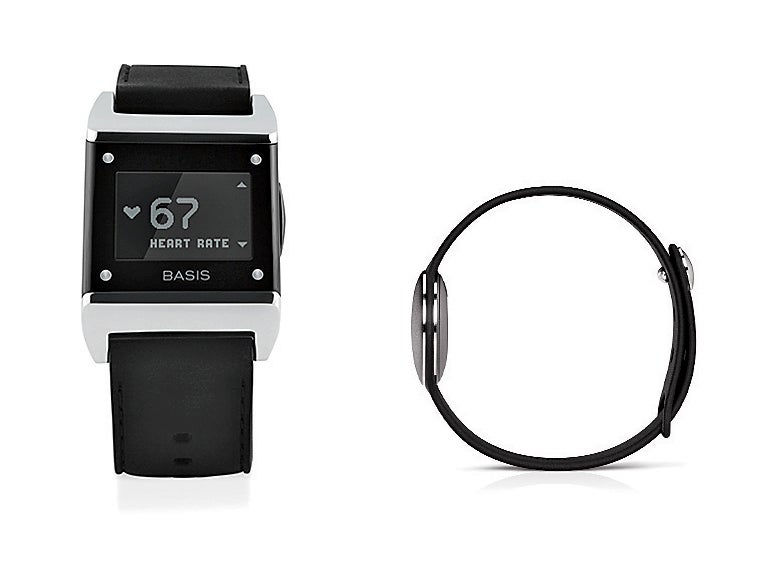As you drool over fitness technology that already exists, remember this: in the futuristic prototyping labs of today’s tech leaders sits beta versions of gear we thought only existed in our dreams. From a shirt that sends physiological info to your cellphone, to a wrist-based tracker that counts your lunges, here’s an inkling of what’s to come—and some of what’s just arriving.
Fitness Trackers
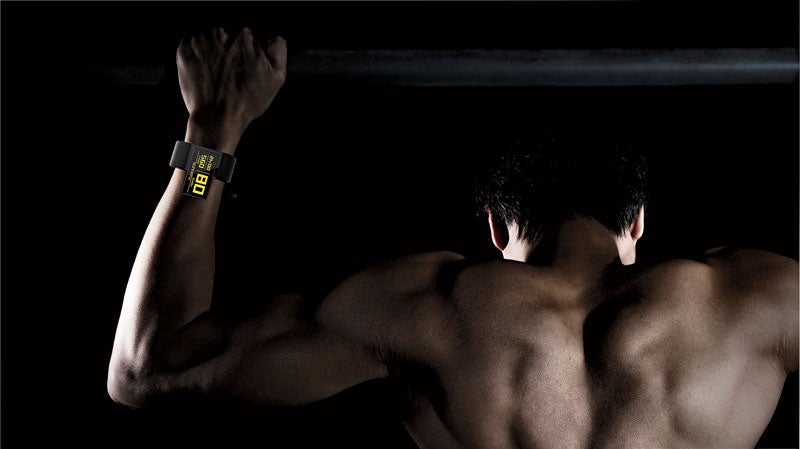
Now
1. Misfit Shine
Activity monitors are meant to merge seamlessly with your routine. But if the device screams gym dork, you’re not likely to wear it. That’s why the Shine works so well: it’s the size of a quarter and can fit in your pocket, on your wrist, or around your neck to keep tabs on basic stats. There are better fitness-specific trackers out there, like the Mio Link, but none look sharper. $120;
Up Next
2. Basis Health Tracker
This device is the size of a wristwatch, and the software’s charts are clear and informative. But what makes the Basis so intriguing is the data it collects, which in addition to activity and heart rate includes REM sleep, skin temperature, and even perspiration. The Basis is available now, but researchers are looking at metadata from thousands of users to study everything from sleep patterns to stress levels, in order to hone the algorithms and offer even more nuanced guidance in the future. $199;
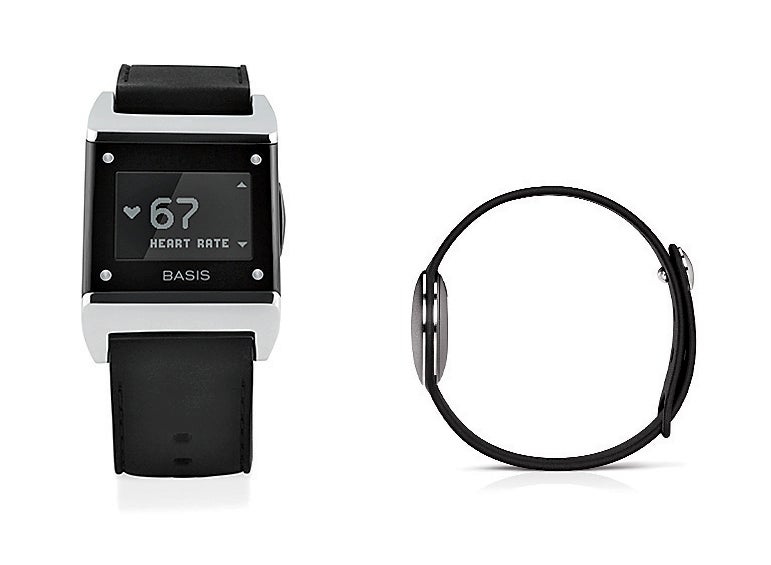
On the Horizon
3. Atlas Fitness Tracker
Most trackers can’t distinguish between running and rock climbing, because they recognize only a few stock moves. The Atlas will solve that problem with an on-board library of thousands of movement patterns, and you’ll be able to teach it new ones. Heart rate will be captured via the wrist, and the device will count reps, whether they’re lunges or laps.
Heads-Up Displays
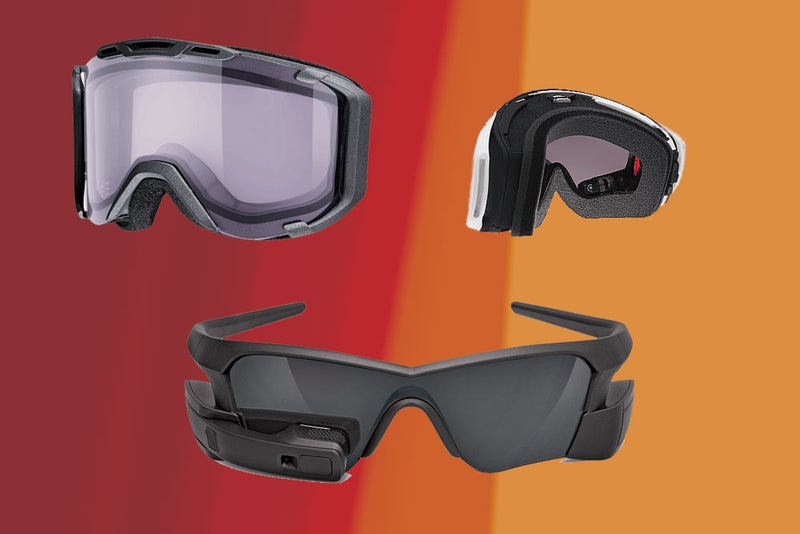
Now
1. Oakley Airwave 1.5
These snow-sports goggles combine Recon’s heads-up technology with Oakley’s superb optics. The raisin-size display shows data like total vertical, top speed, and how many milliseconds you spent in the air during your last jump. It also shows mountain maps with real-time info about where your friends are. (They just need to run the Airwave app; Android and iOS.) The monitor’s glow is a bit distracting at first, but you get used to it. $649;
Up Next
2. Recon Instruments Jet
Recon’s cycling sunglasses sync via Bluetooth with your smartphone and allow you to project nearly any app on a penny-size display below your right eye. A touch-sensitive pad lets you swipe between screens, and there’s an HD camera for filming. While it’s great for viewing performance metrics like heart rate, pace, and watts, the technology is still a bit bulky for sunglasses. $599;
On the Horizon
3. Uvex Snowstrike VT
These ski and snowboard goggles will have an LCD for a lens—the same kind used in flatscreen TVs, only this one will be transparent—and instantly adapt to changing light conditions. AlphaMicron, the company behind the lens, produces similar technology for the U.S. military, allowing fighter pilots to see data on their helmet shields. Adding this feature to civilian goggles and sunglasses is only a matter of time.
Apparel, Shoes, and Accessories
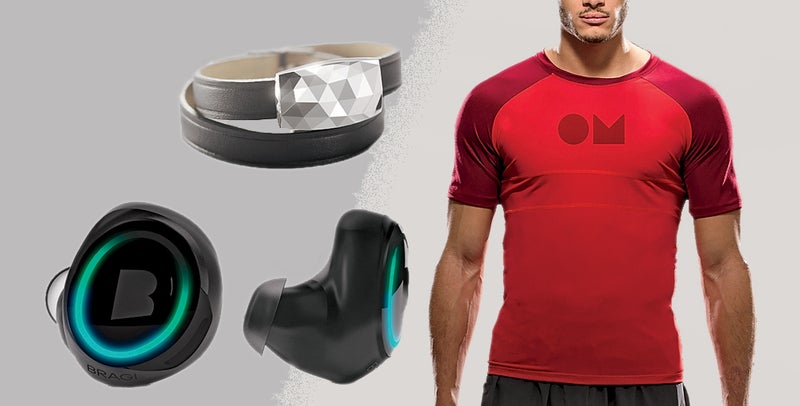
Now
1. Netatmo June Monitor
Tech is being embedded in everything from concussion-aware helmets to blood-glucose-sensing contact lenses, which Google is developing for diabetics. One of the more unique is Netatmo’s June, aimed at women. The June is a UV sensor embedded in a stylish, crystal-like structure that monitors sun exposure and alerts the wearer, via an accompanying app, when the UV limit for her skin type has been reached. $99;
Up Next
2. OmSignal Shirt
Soon enough, every piece in your wardrobe will monitor some aspect of your physiology. Om’s shirt, due out this summer, is the first step in that direction. Smart fibers will track heart rate, respiration, stress, and calories burned, as well as steps and cadence. A card-size device shares that data with your smartphone, which can parse the stats in various apps. The unit is still large enough to notice, but fully stealth wearables aren’t far off. Price to be determined;
On the Horizon
3. Bragi Dash
Chest bands are restrictive, smartphones are bulky, and wrist monitors can’t play music. That’s the logic behind the Dash. The wireless earphones will store and play music and tick off pace, cadence, and target heart rate for a given workout or event. HR monitoring will be achieved through a light-based pulse reading from your ear and could one day be used to provide analysis of everything from blood pressure to oxygen levels.

